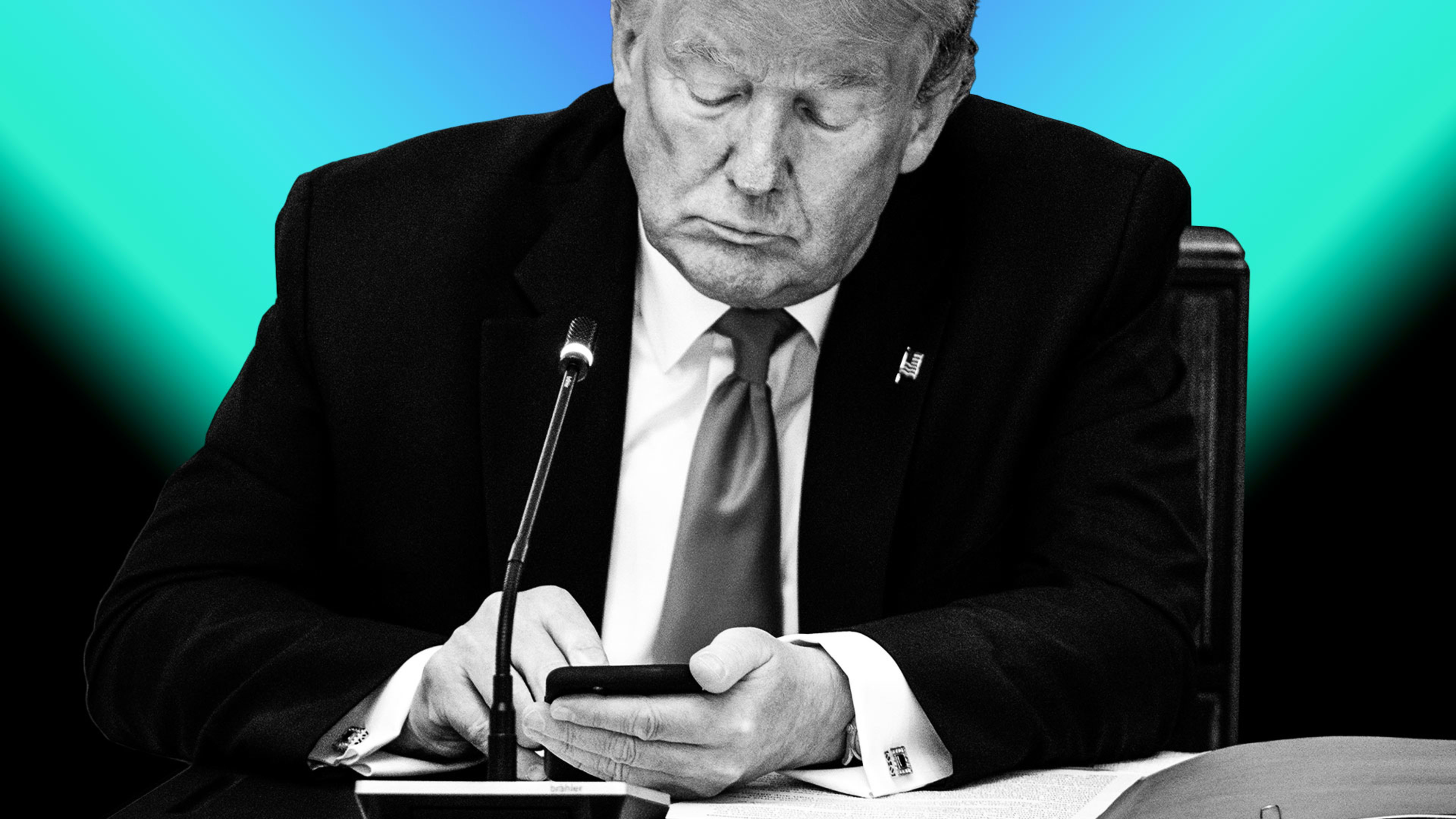Trump Media & Technology Group, the Donald Trump-backed media organization behind Truth Social, is off to a soaring start in its public debut, and the former president is set to reap billions off its Nasdaq performance.
But a new study suggests that Truth Social is still sorely lacking when it comes to political effectiveness. Research published in the Journal of Information Technology & Politics looked at the question of whether Trump has been able to leverage Truth Social into free media coverage in the way he did with Twitter in 2016. Trump was famously banned from Twitter following the January 6 insurrection but was reinstated to the social media platform once Elon Musk bought the company, which he’s since renamed X. Despite the ban reversal, Trump continues to post exclusively on Truth Social.
The research team analyzed Trump’s behavior on social media in 2016—when he was on Twitter—and 2022, when on Truth Social, and the corresponding media coverage that followed his public pronouncements. “We found that Trump’s Truth Social posts were able to predict news attention to him the day after, though this relationship was not as strong compared to the news popularity of his tweets in 2016,” says Josephine Lukito, one of the study’s coauthors and an assistant professor at the University of Texas at Austin. Most media coverage came from partisan outlets that support Trump politically, while overall attention of his comments on social media dipped following his move to Truth Social.
The results show that Trump’s decision to stick with Truth Social has been a double-edged sword. “While the platform may not be making much money, and while it is substantially smaller than other mainstream platforms, it still achieves its goal: help Trump specifically garner attention from the media,” says Lukito.
However, coverage and attention has shifted—which could spell problems for Trump in the upcoming election campaign. News stories referencing Trump and Truth Social that were analyzed by the researchers, account for a smaller percentage (4.6%) of total news stories referencing Trump in 2022, compared to the 6.1% of news stories mentioning Trump and Twitter in all stories covering him in 2016. That’s despite a major uptick in the overall number of stories about Trump in 2022 versus 2016—nearly 600 a day compared to 223 a day in 2016. (The study did not factor in the 2020 election.)
“Journalistic practices have changed, specifically how journalists cover Trump and social media,” says Yini Zhang, an assistant professor at the University of Buffalo and one of the study’s coauthors. “Though news media outlets directly and profusely embedded and amplified Trump’s tweets in 2016—which can directly take readers to his Twitter page and facilitate engagement with his tweets—they no longer did so with the same intensity in 2022.”
Not everyone is convinced that the findings can help elucidate whether Trump’s decision to prioritize Truth Social is a boon or a bust for his campaign. “I think it is tricky to make direct comparisons between Twitter in 2016 and Truth Social in 2022 as both are very different beasts,” says Steven Buckley, lecturer in media and communication at City, University of London. Buckley, who was not involved in the study, believes that the changing method of communication to Truth Social is coupled with a cannier approach to covering Trump than was exhibited in the preelection period. “These days, his posts seem to be covered by the major networks only as part of a larger story about him,” he says. “In essence, most of his posts are now in reaction to other news events and whilst his reactions are newsworthy, they are no longer the main event of a news story.”
So what does this all mean for the upcoming presidential campaign? Here, opinions are split. The authors of the recent study believe that although Trump is on a far smaller social media pulpit, the press is still helping amplify his pronouncements to a wider audience. “Even when he’s not on Twitter, even when the platform he’s on is very small, journalists are still giving his messages outsize attention,” says Lukito.
Buckley thinks Trump might have to return to X in order to attract a bigger audience. “Truth Social is essentially an empty cathedral with a couple of right-wingers shuffling among the pews at the moment,” he says.
Recognize your brand’s excellence by applying to this year’s Brands That Matter Awards before the final deadline, June 7.
Sign up for Brands That Matter notifications here.
